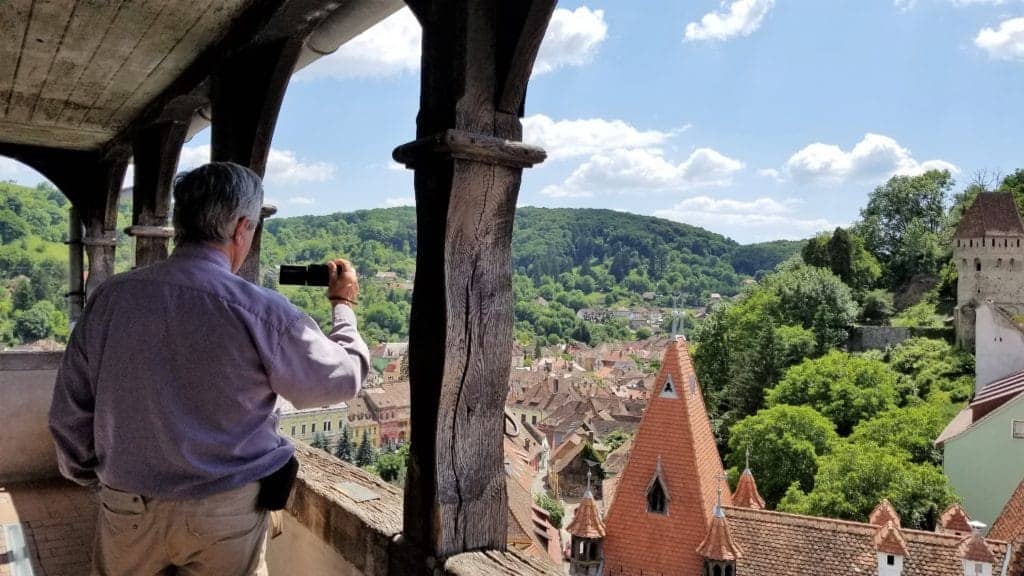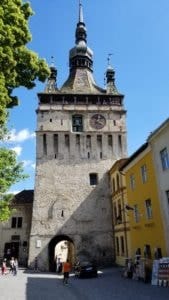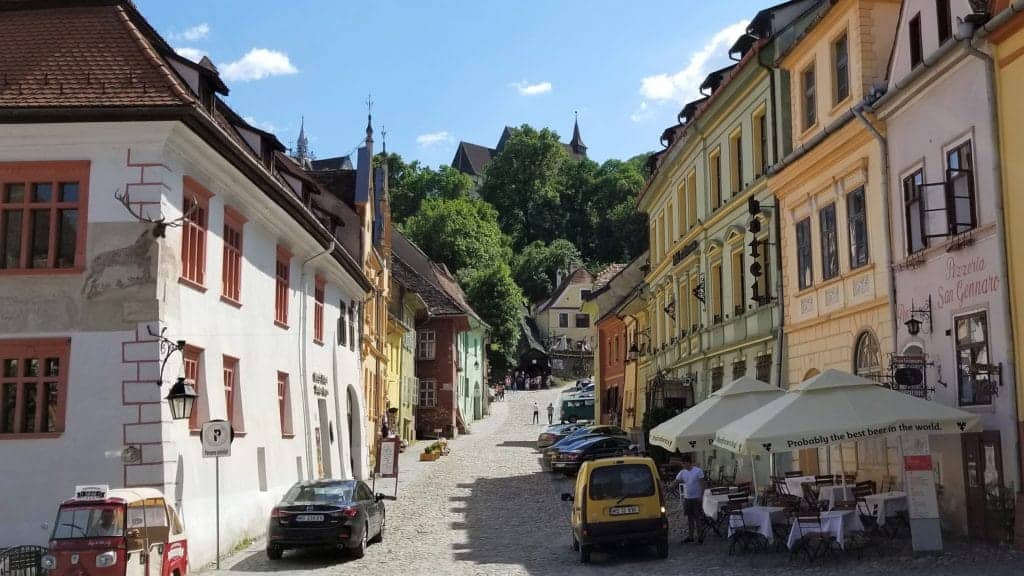Sighișoara


Sighișoara, more than any other town we have visited, gives one the feeling of being in a real medieval city. It was extremely interesting. It is one of seven walled Saxon citadels in Transylvania. I think we will see all of them while we are here.
Sighișoara’s origins go back to the 1st Century AD when the Dacians, ancient inhabitants of Romania, built the original city. In the 12th century the Saxons built a new citadel here known as Castrum Sex (Fort Six). UNESCO describes the town as a perfectly intact 16th century gem with nine intact towers of the original fourteen, cobbled streets, burgher houses and ornate churches. Especially interesting is the 14th century clock tower. The clock tower has four small turrets on top which symbolize the judicial autonomy of the Town Council, who could therefore apply the death penalty if necessary. The clock has two sides or faces. One clock face/dial overlooks the Lower Town and the other faces within the citadel. On the citadel side the clock has many figurines including Justice accompanied by two angels representing Day and Night. At 6 am, the angel symbolizing the day appears, marking the beginning of the working day. At 6 pm the angel of night comes out carrying two burning candles, marking the end of the working day.
The clock dial overlooking the Lower City features a set of seven figurines, each representing the pagan gods who personify the days of the week. In Latin each day of the week is based on a different pagan god. Both Romanian and French take their days of the week from Latin. I can actually look at store signs in Romania and know what hours they are open which days and when they are closed. I might not be able to read a lot of French, but I do recognize the days of the week. I thought that this relationship to the various gods was interesting and put the chart below together.
Pagan god Romanian French
Diane Luni Lundi
Mars Marţi Mardi
Mercury Miercuri Mercredi
Jupiter Joi Jeudi
Venus Vineri Vendredi
Saturn Sâmbătă Samedi
the Sun Duminică Dimanche
We climbed to the top of the clock tower. From there you can look down on the red-tiled roofs of the Old Town and the narrow cobblestone streets. You can also see past the town into the lovely countryside. The photo at the beginning of the article was taken from the top of the Clock Tower.

During a restoration in 1776 all the old murals in one of the churches were painted over. They were first copied exactly onto parchment so that they could be reproduced later. For some reason, all of the copies were lost, and the murals were never recreated. It is unbelievable to me that I can write about buildings being “restored” in the 1700s and earlier. That is just so different from North America.
Vlad III, son of Vlad Dracul and the inspiration for Dracula was born in Sighișoara. For all his military successes Vlad Dracul was given the Order of the Dragon hence Dracul. The word Dragon or Dracul is quite interesting. Latin dragons served as symbols of independence, leadership, strength and wisdom. In the bible the devil with the serpent that tempted Adam and Eve, gave the snake-like dragon connotations of evil. Thus, the Romanian word Dracul stands for both dragon and devil.
I had mentioned previously about some of the defense towers being the responsibility of various guilds. I hadn’t realized that this was the norm. A guild, such as the cobblers or the tailors or the goldsmiths, would be responsible for the defense of a section of the town. Each tower was built, maintained and defended by a specific craft guild. Today the towers are still known by the names of the guilds that were originally responsible for them, for example the Tailors’ Tower or the Ropemakers’ Tower.
I thought it was interesting that although 14 guilds each had a tower and section of the citadel that they were responsible for defending only four of them, the goldsmiths, tailors, carpenter and tinsmiths, were actually allowed to have their guilds and their workshops inside the citadel. The rest were based in the Lower Town. Guilds were active here until 1875.

Postscript: I just realized that I needed to add a comment about the picture above. Actually not the picture but the photographer. At the table next to us were three “senior” citizens on a 10 day bus tour from Germany. The gentleman told me that he spoke a little English because he needed it to read the books for work. It turns out that he worked for IBM for 33 years looking after mainframe computers. He has been retired since 1989 and appears to be thoroughly enjoying himself.

Leave a Reply